This simple vegetarian curry is both hearty and light, and packed with layer after layer of flavor. The combination of chickpeas and cauliflower is super nutritions and creates an interesting combination of flavors that's meaty without actually including any meat.
While the recipe includes a few anchovy fillets, which help build flavor in the sauce, this curry can easily be made vegan, and you'll find several suggested substitutions for anchovies in the recipe.
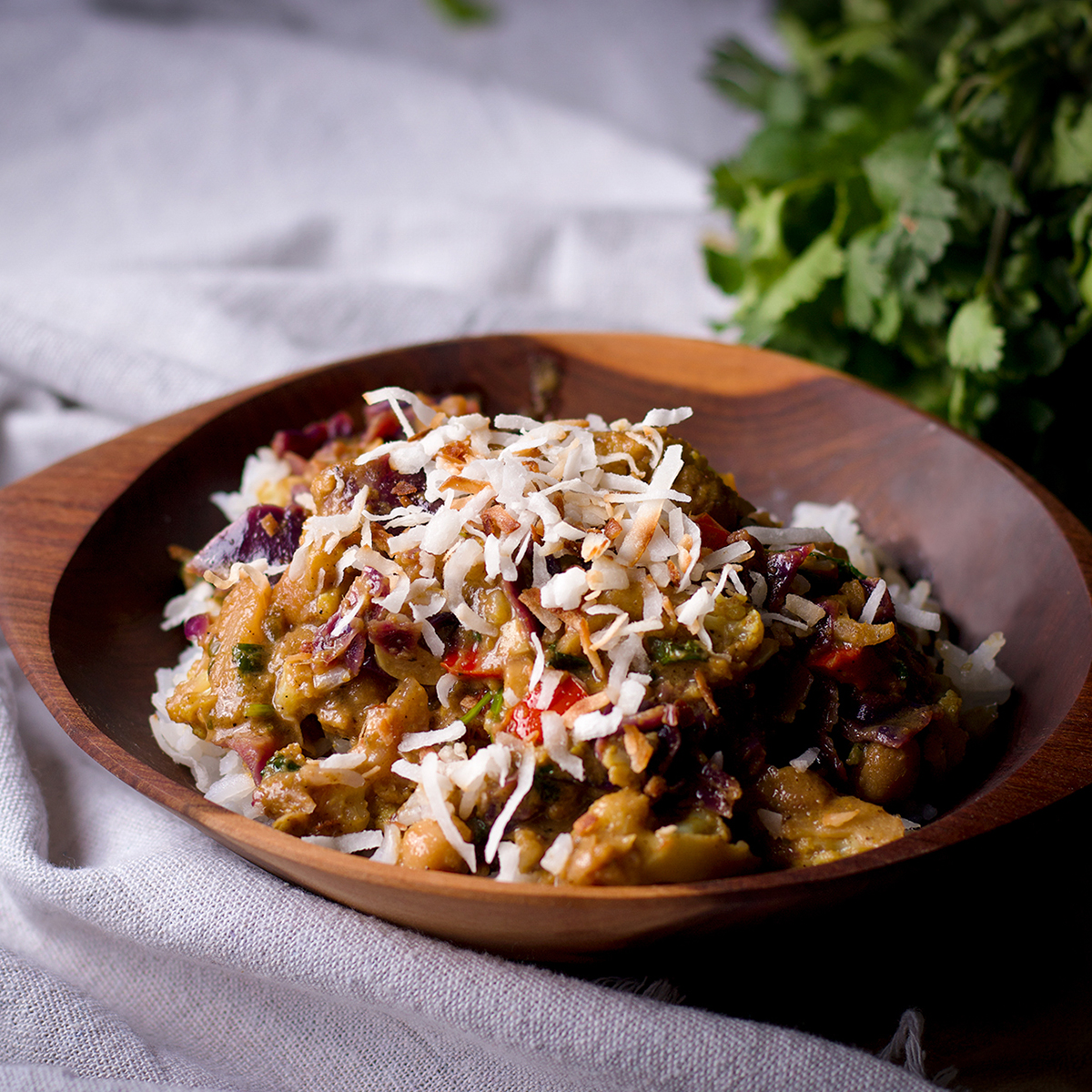
What's the Difference Between all the Varieties of Coconut Milk?
You've probably noticed that the term "coconut milk" is not as descriptive as you might think when you get to the grocery store and realize that there are a couple different options. There's the kind of coconut milk found in the refrigerated dairy section and the kind in cans, probably stocked in the asian food isle.
Complicating matters further, you'll probably find full fat, light, and non-fat varieties. So, which do you choose?
For this recipe, you want to look for canned coconut milk, preferably "full fat".
The fat in coconut milk does two things for this dish:
- It enriches the body of the broth and creates a more silky texture and...
- brings out all the other flavors in the broth.
Fat is a conductor of flavor. So, when you add a bit of fat to a dish, you're also helping to bring out the flavors of the other ingredients.
Why used canned coconut milk instead of a refrigerated carton?
The big difference between canned coconut milk and refrigerated cartons is the amount of water contained in each. The coconut milk in cartons has a lot more water than the kind found in cans. It's perfect for smoothies or to pour over your morning bowl of cereal, but not usually the best option for cooking.
For curry recipes like this one, opt for canned coconut milk, which has a higher concentration of flavor and much less water.
What about Coconut Cream and Cream of Coconut?
Just to confuse us, these are actually two very different products - different from each other and different from coconut milk. Both contain much less water than coconut milk, even the kind in the can. They are thick, like whipping cream. In many recipes, coconut cream can be swapped out for cream made from dairy without any issues.
Cream of coconut, on the other hand, has quite a bit of added sugar. You'll most often see it listed in the ingredients for desserts and tropical cocktails, but isn't generally used for savory cooking.
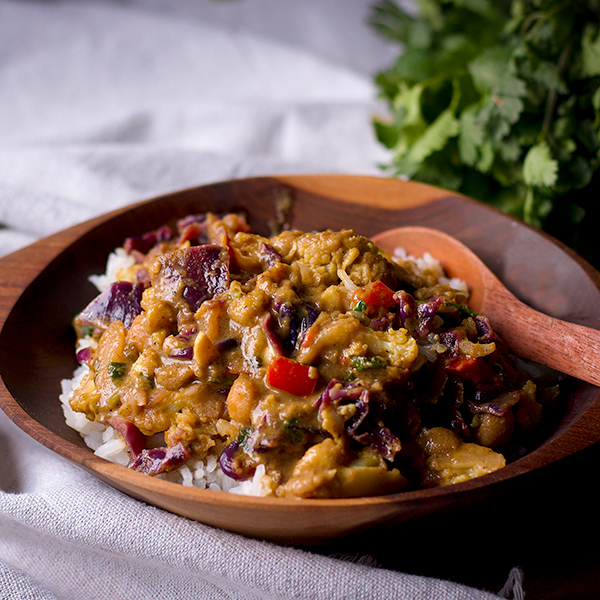
Why Does this Cauliflower Curry Include Roasted Cabbage?
I realize that cabbage isn't a traditional ingredient in most curry dishes. But, it adds slightly sweet and bitter elements to this dish that complement and balance the other flavors without being the slightest bit overwhelming.
This method for Roasting Cabbage couldn't be easier, requiring only about 5 minutes of hands-on time. It's one of my all-time favorite vegetable side dishes, especially when served with Simple Roast Chicken or Tuscan Braised Beef.
But, honestly, we love it so much around here that we often eat it for lunch all on its own, usually with some rice and white beans or chickpeas.
Because we enjoy it so much, I usually plan to make a generous amount of Roast Cabbage the night before I want to make this cauliflower and chickpea curry. We eat the cabbage alongside whatever else we're having that night, and I simply reserve the leftover for this curry.
However, it's just as easy to make it the same night you plan to make the curry, popping it into the oven about 40 minutes before you want to start cooking curry.
As a quick alternative to roasting, you can also sautéed chopped cabbage for a few minutes. Simply chop 2 cups of cabbage into 2-inch pieces and heat about 1 teaspoon of oil in a sauté pan or wok over high heat until the oil is just beginning to smoke.
Add the cabbage to the hot oil and cook, stirring constantly, until parts of the cabbage are blistered and the cabbage is crisp-tender.
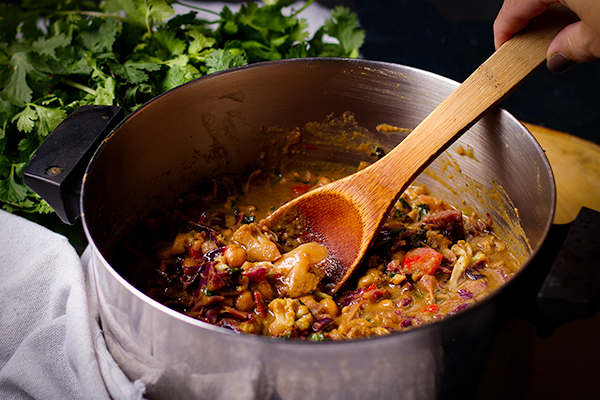
How to Get the Most Flavor From Cauliflower
This recipe will instruct you to add the cauliflower florets to the pan before adding any liquid, sautéing it over medium-high heat, until brown splotches appear on the florets.
Browning vegetables like cauliflower caramelizes the natural sugars, adding additional flavor to the dish. As with Perfect Sautéed Vegetables, browning cauliflower requires a quick sauté over fairly high heat, which helps maintain the integrity of the flavor and texture.
Just be careful to not overdo it. A bit of browning is good, but you don't want to burn or overcook your cauliflower. Cook the cauliflower just until a few brown spots appear here and there on most of the florets.
As the cauliflower starts to brown, some brown bits will stick to the bottom of your pan. This is a good thing.
Remember, browned bits = flavor. After adding the broth and coconut milk, use a spoon to loosen those little brown bits from the bottom of the pan so that they dissolve in the liquid, adding richness and another layer of flavor.
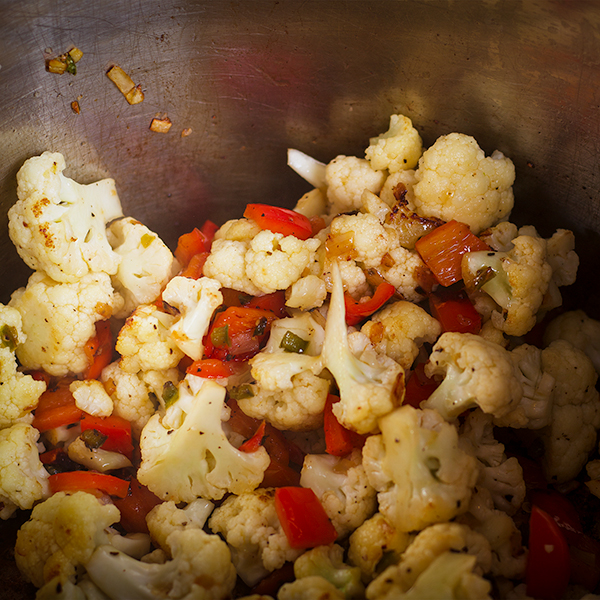
More coconut recipes
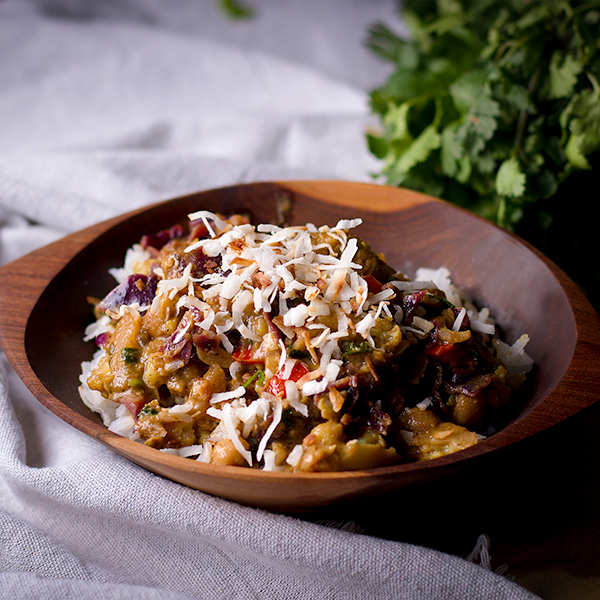
More plant based recipes

+ Subscribe to my newsletter for new and exclusive recipes in your in-box every month! As a full time traveler, living, working, cooking, and baking from a 5th wheel RV, it's also where I share our experiences of life on the road.
If you give this recipe a try, let me know! Leave a comment, rate it, or take a picture and tag it #alittleandalot on Instagram.
📖 Recipe
Cauliflower and Chickpea Curry with Coconut

This simple vegetarian/ vegan curry is both hearty and light, and packed with layer after layer of flavor. The combination of chickpeas and cauliflower is super nutritions and creates an interesting combination of flavors that's meaty without actually including any meat.
Ingredients
- 1 cup shredded coconut, sweetened or unsweetened (*see note)
- roasted cabbage
- 1 ½ - 2 pound head of cauliflower; 3-4 cups cauliflower florets
- 3 tablespoons grape seed or extra virgin olive oil
- ¼ cup diced shallot
- 1 small jalapeño, stem and seeds removed, diced
- 1 red bell pepper, stem and seeds removed, chopped into 1-inch pieces
- Salt and ground black pepper
- 2 teaspoons minced fresh garlic
- 1 tablespoon grated fresh ginger
- 3 anchovy fillets (*see note for vegan substitutions)
- 8 ounces green curry paste (you can use red curry paste if you like)
- 2 teaspoons garam masala
- 2 cups vegetable broth or water
- 13.5 ounces can of unsweetened coconut milk (*See note)
- 3 teaspoons real maple syrup (can also use honey, molasses, or brown sugar)
- 1 can chickpeas (15 or 16 ounces)
- 1 - 4 tablespoons freshly squeezed lime juice (to taste)
- ½ cup chopped fresh cilantro
- 2-3 cups of cooked rice, for serving
Instructions
* Have all ingredients prepped and at hand before you begin cooking the curry.
- Add the shredded coconut to a skillet and set it over medium heat. Cook, stirring frequently, until the coconut is starting to brown. The second you see brown spots on a few pieces of coconut, stir constantly, and watch carefully. Cook only until about half the coconut is brown. If you cook any longer, some of the coconut will burn. Remove the pan from the heat and scrape the coconut into a bowl. Set aside to cool while you prepare the curry.
- Cut the roasted cabbage into 2-inch pieces, pile it into a bowl, and set aside.
- Slice the cauliflower head from the stem, break apart the individual florets, pile them into a bowl, and set aside.
- Add the oil, diced shallot, jalapeño, and red bell pepper to a large saucepan and set the pan over medium heat. Sprinkle with about ½ teaspoon salt and pepper. Cook, stirring frequently, until the vegetables are soft and the shallots look translucent, about 5 minutes.
- Turn the heat up to medium high, add the cauliflower, and sprinkle with about ½ teaspoon more salt. Cook, stirring frequently, until the cauliflower is spotted with brown splotches. (See images and video above for what this should look like.)
- Reduce the heat back down to medium and add the diced garlic, grated ginger, and anchovy fillets. Cook, stirring constantly, for 1 minute. Add the curry paste and garam masala and cook, stirring constantly, for 1 minute longer.
- Stir in the broth (or water), coconut milk and the maple syrup, scraping up any brown bits from the bottom of the pan as you stir. Stir in the chickpeas and another ½ teaspoon of salt. Turn the heat up to high and bring the liquid to a boil. Adjust the heat to maintain a gentle simmer and let cook for 20 minutes, stirring from time to time.
- Remove the saucepan from the heat and add the lime juice. Start with 1 tablespoon and taste. Add more salt and more lime juice, bit by bit, until it tastes right to you. Stir in the chopped cabbage and cilantro.
- Serve over rice, topped with shredded coconut.
Notes
- Should you use sweet or unsweet shredded coconut? Topping curry with sweetened or unsweetened coconut is simply a matter of taste. Personally, I like how sweetened coconut compliments the savory flavors in the curry. But, if you don't typically like to blend sweet and savory flavors, use unsweetened coconut.
- Roasting cabbage takes about 5 minutes of hands-on time and results in tender, slightly caramelized cabbage with a deliciously concentrated flavor. But, you can also sautéed chopped cabbage for a few minutes, which is a much quicker option if you're in a hurry. Simply chop 2 cups of cabbage into 2-inch pieces and heat about 1 teaspoon of oil in a sauté pan or wok over high heat until the oil is just beginning to smoke. Add the cabbage to the hot oil and cook, stirring constantly, until parts of the cabbage are blistered and the cabbage is crisp-tender.
- Vegan substitutions for anchovies: minced kalamata olives, soya sauce, or miso
- Coconut Milk: I prefer to use full- fat coconut milk from a can, which will make the dish silkier than reduced fat. If you're wondering what the difference is between canned coconut milk and the kind found in cartons, see information above the recipe.
Nutrition Information:
Yield:
4Serving Size:
1Amount Per Serving: Calories: 548Total Fat: 23gSaturated Fat: 10gTrans Fat: 0gUnsaturated Fat: 12gCholesterol: 3mgSodium: 2528mgCarbohydrates: 77gFiber: 13gSugar: 20gProtein: 14g

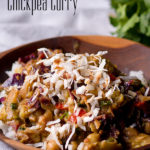
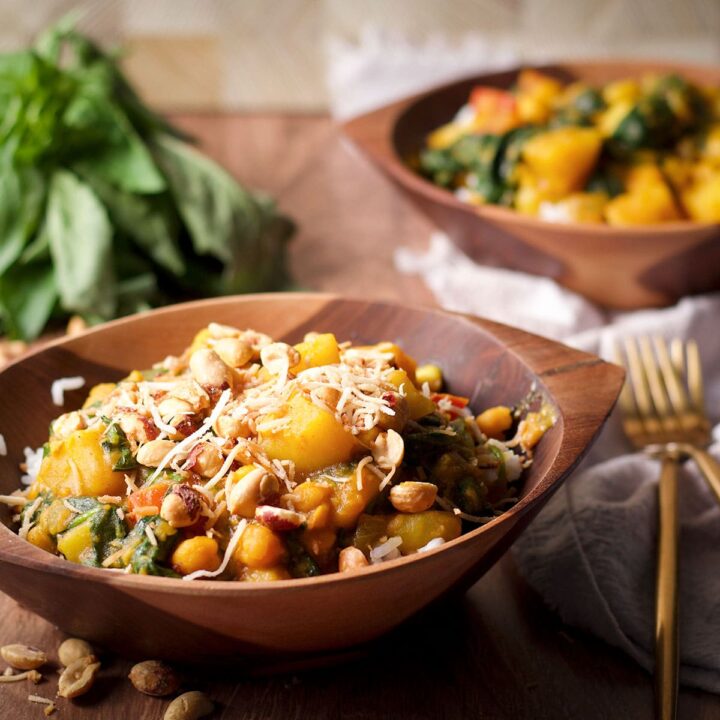
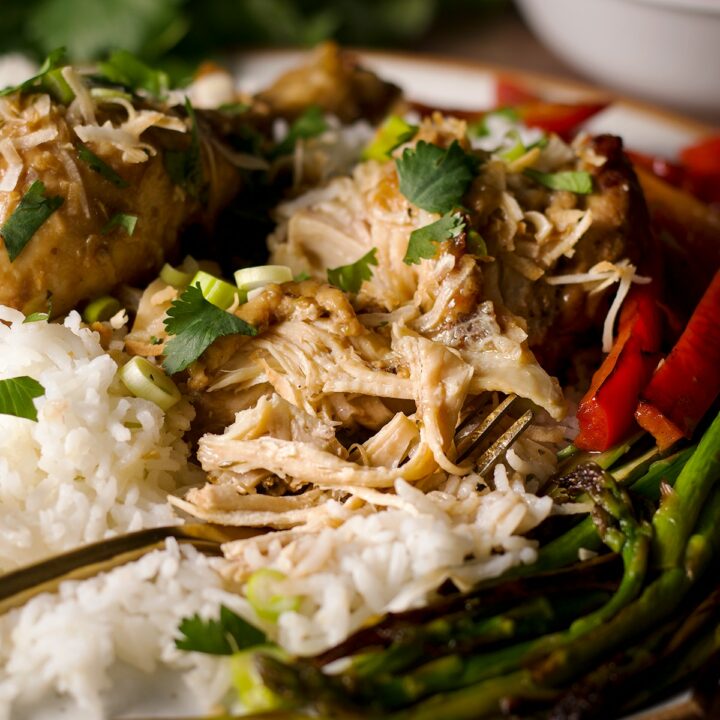
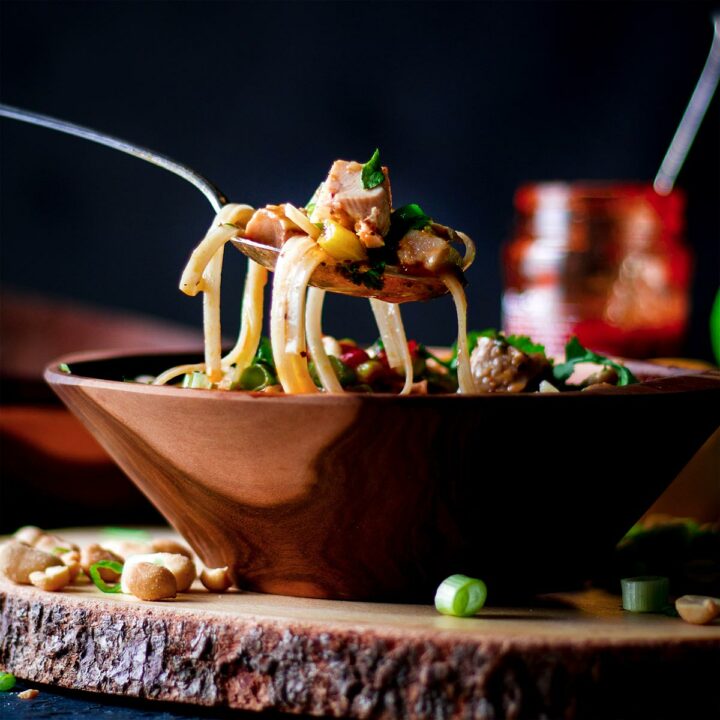
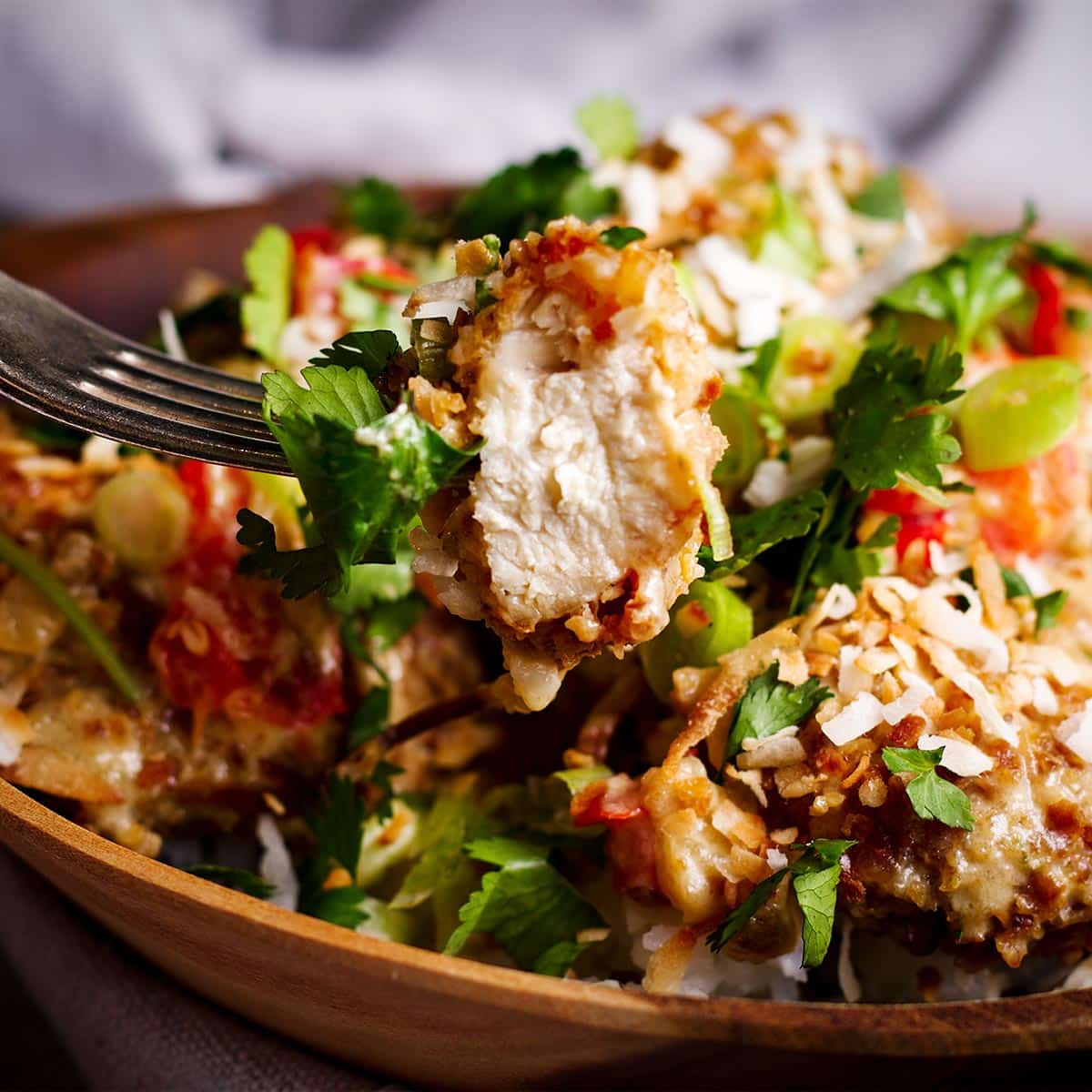
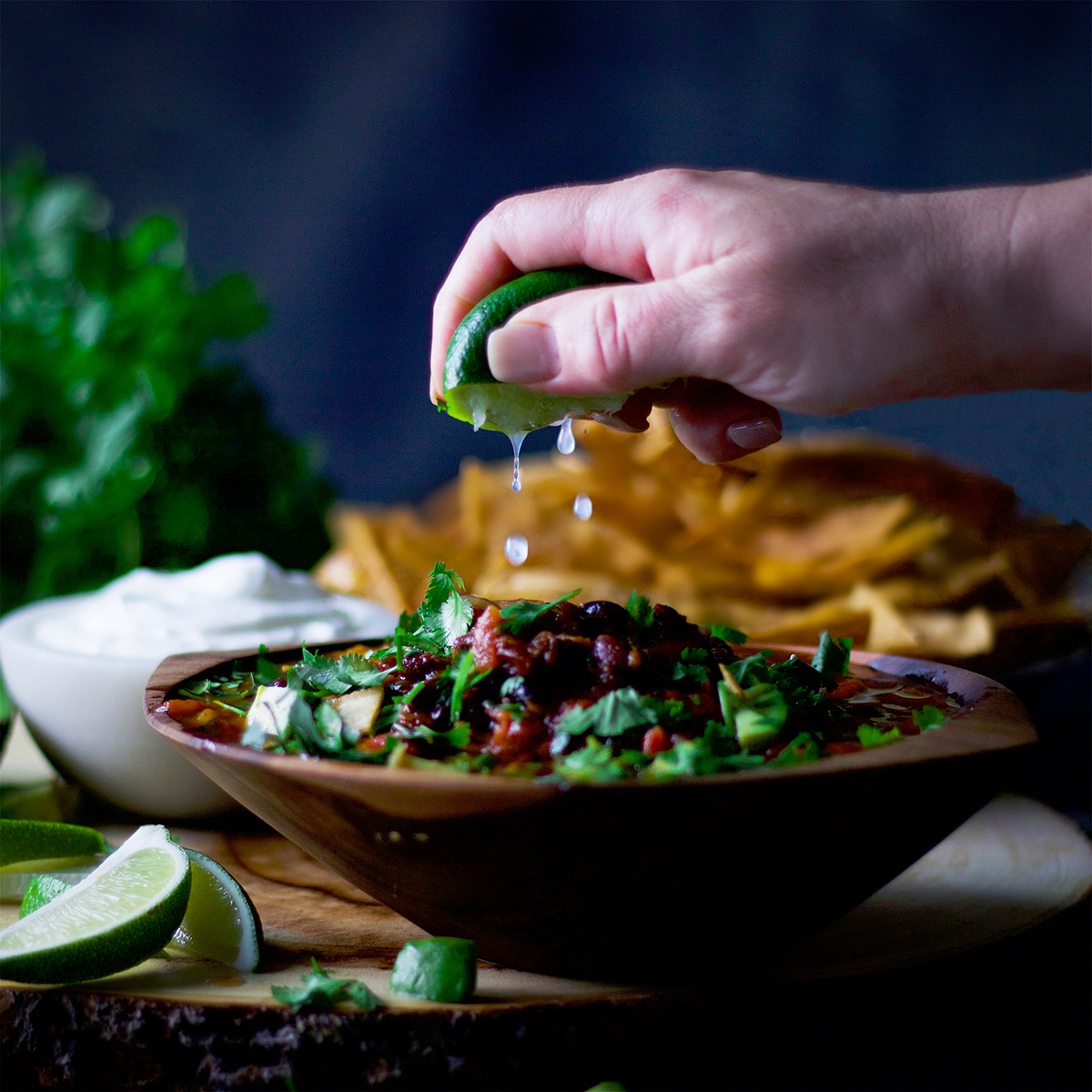
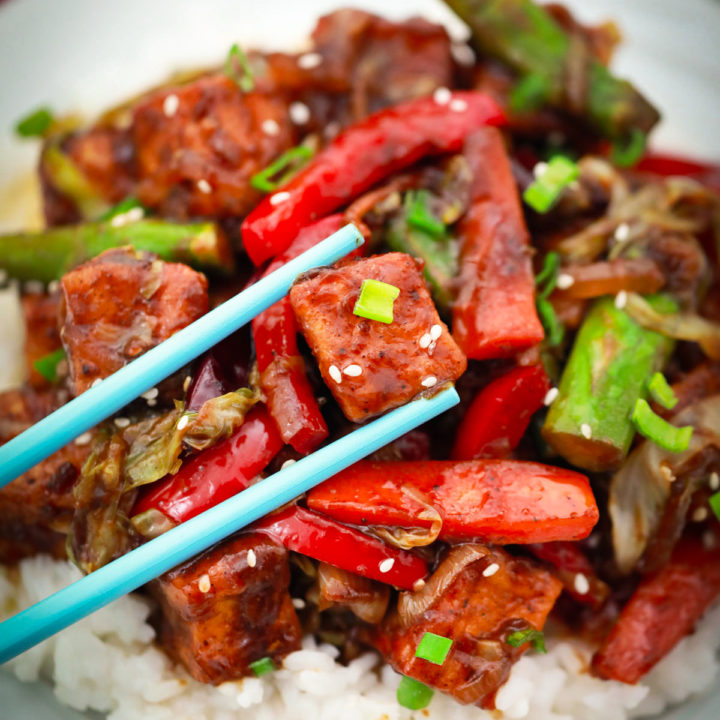
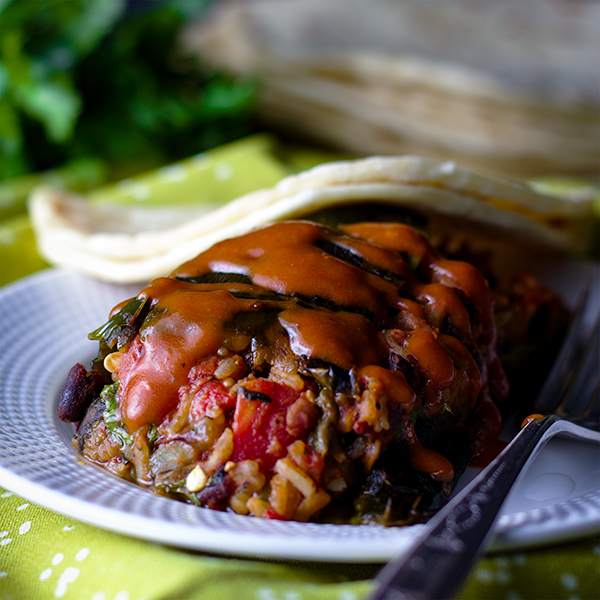
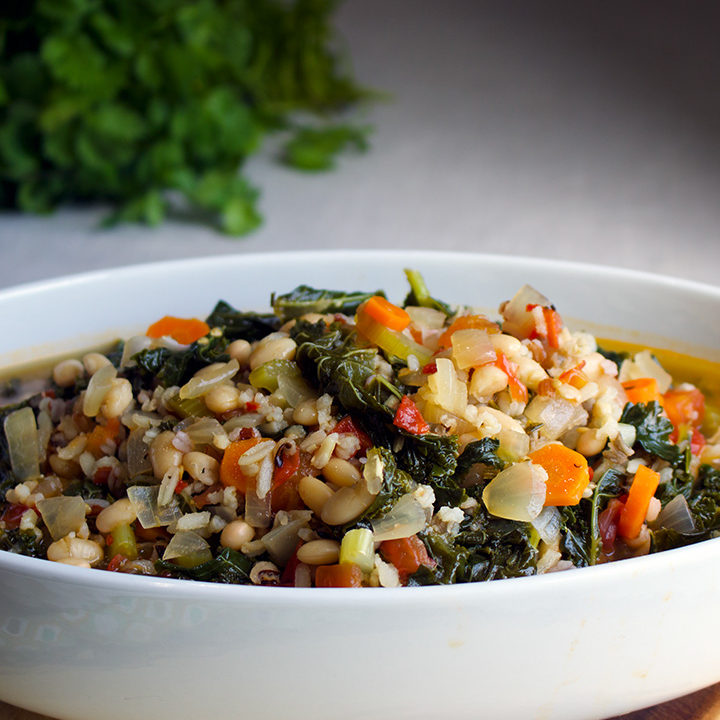
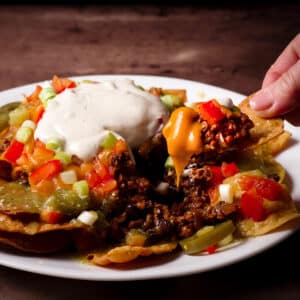
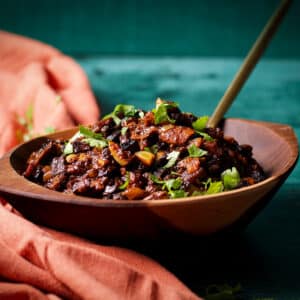


Comments
No Comments